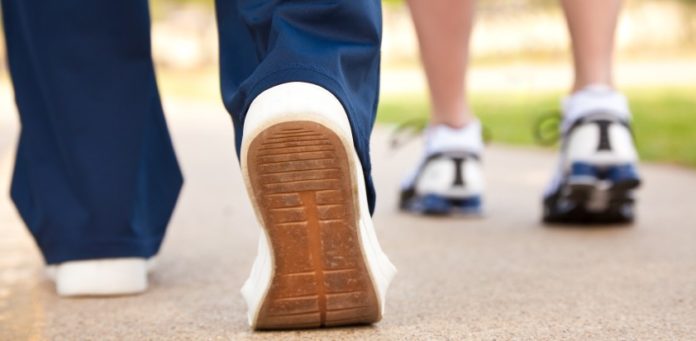
It’s widely known that prolonged sitting is a risk factor for chronic health problems and early death. But new research suggests even a small increase in activity — just two minutes of walking every hour — can offset the risk of disease and death linked to prolonged sitting.
Physical inactivity causes an estimated one in 10 deaths worldwide, putting it on par with the dangers of smoking and obesity. In the United States, about 80 percent of adults fall short of completing the recommended 2.5 hours of moderate physical activity each week. At the same time, more Americans than ever are working in sedentary jobs, and other leading contributors to daily sitting time — such as watching television and driving personal vehicles — are at all-time highs.
Mounting evidence suggests that the health risks of too much sitting time occur independently from the effects of physical activity — meaning that regular exercise may not be enough to protect against the increased mortality risk associated with long stretches of sitting. Importantly, however, this also indicates that making small changes to reduce sitting time — regardless of physical activity level — could offer major health benefits.
With that in mind, Dr. Srinivasan Beddhu, professor of internal medicine at the University of Utah School of Medicine in Salt Lake City, and colleagues set out to investigate the potential health effects of trading sitting time for brief, light activity for just a couple of minutes throughout the day. The researchers published their findings in the Clinical Journal of the American Society of Nephrology (CJASN).
Two minutes of walking per hour linked to 33% lower risk of death
For their analysis, the team used data on 3,243 participants in the 2003-04 National Health and Nutrition Examination Survey (NHANES). To monitor the intensity of their activity during waking hours, participants were asked to wear accelerometers for several days.
The participants were followed for 3 years after the activity data was collected. During this time 137 of them died.
On the basis of the accelerometer readings, the researchers worked out on average how many minutes per hour were spent on sedentary (less than 100 accelerometer counts per minute), low (100-499), light (500-2019), and moderate to vigorous (2020 and over) activity. Then, they examined the relationship between mortality risk and time spent in these various categories of activity.
The researchers found no benefit to decreasing sitting by two minutes per hour and replacing it with two minutes of low-intensity activity, such as standing. However, they found that trading two minutes of sitting for two minutes of light-intensity activity — such as casual walking, light gardening or cleaning — was linked to a 33 percent lower risk of premature death.
“It was fascinating to see the results because the current national focus is on moderate or vigorous activity,” said Dr. Beddhu. “To see that light activity had an association with lower mortality is intriguing.”
Even short periods of light activity add up
Dr. Beddhu notes that even short periods of light activity add up to a lot when repeated over the course of a week. Assuming you are awake for 16 hours a day, then strolling for two minutes an hour adds about 400 calories a week to your energy expenditure — which is not far off the 600 calories of expenditure that it takes to accomplish the recommended goal for moderate exercise.
It’s important to point out that moderate exercise brings health benefits in ways that light activity cannot — for example, it strengthens the heart, muscles and bones. But it also appears that brief bouts of light activity confer their own independent benefits, the researchers concluded:
“Based on these results we would recommend adding 2 minutes of walking each hour in combination with normal activities, which should include 2.5 hours of moderate exercise each week.”
Besides taking short walking breaks, here are five other ways you can add brief bouts of activity throughout the day:
- Stand up while talking on the phone or better yet, take a walk while doing so.
- When running errands, park in a spot furthest from the store’s entrance. This will give you more walking time after sitting while driving.
- While watching television, use the commercial breaks as a reminder to get up and move — tidy the house, check the mail, etc.
- Take the stairs instead of the elevator.
- If you have the extra time, try walking instead of driving to your destination.
